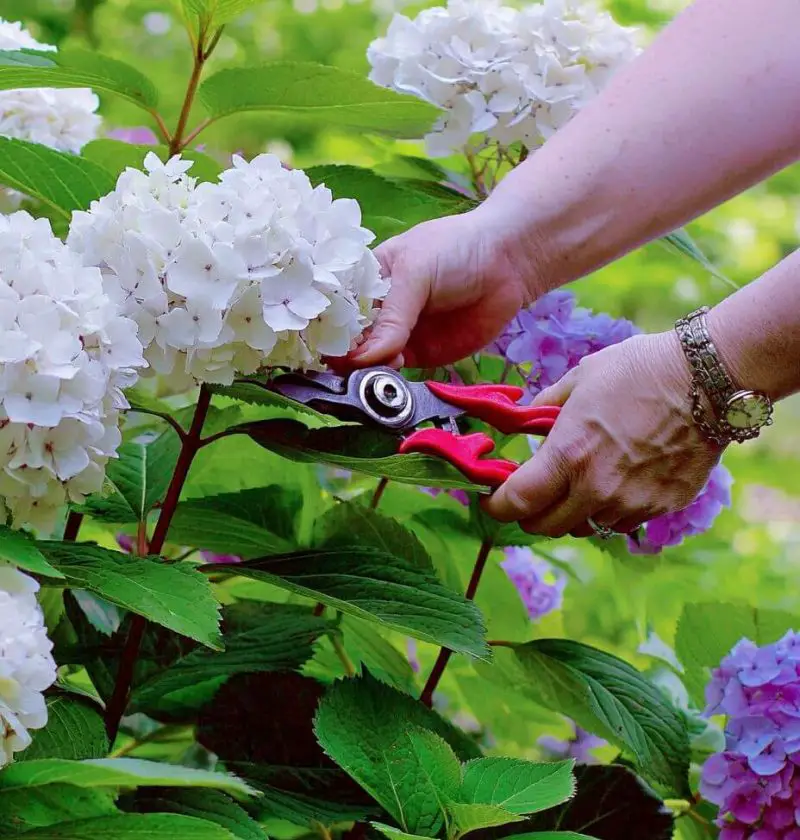Save This Recipe
You know, when I first started gardening, I thought pruning meant hacking things back until they looked neat. I’ll never forget the year I “tidied up” my hydrangeas in early spring… only to get a whole lotta green and not a single bloom. I remember standing there, garden shears in hand, feeling personally victimized by my own plants.
Since then, I’ve learned that pruning hydrangeas isn’t just about keeping things tidy. It’s a quiet ritual—part science, part intuition—that, when done right, leads to those big, pillowy blooms we all dream about. So let’s break this down together, gardener to gardener, and talk about where and when to make the cut (literally).
Why You’ll Love These Pruning Tips
-
More blooms, less guesswork
-
Keeps your hydrangeas healthy and disease-free
-
Easy-to-follow cuts based on your variety
-
Encourages stronger stems and bigger flowers
-
Helps light and air reach every part of the plant
First Things First: Know Your Variety
Let me tell you, hydrangeas are like kids—they all need love, but they don’t all need the same kind.
Here are the big three you’ll see in most gardens:
-
Bigleaf (Hydrangea macrophylla) – Think mopheads and lacecaps. These bloom on old wood (last year’s growth).
-
Panicle (Hydrangea paniculata) – Cone-shaped flowers, usually white or blush. These bloom on new wood (current year’s growth).
-
Smooth (Hydrangea arborescens) – Like the classic ‘Annabelle.’ Also blooms on new wood.
Why it matters: If you cut back a bigleaf hydrangea in late winter, you’ve just snipped off all those baby flower buds. Whoops! That’s a hard-earned lesson I’ll never forget.
Pruning Timing: It’s Not Just About the Calendar
Let’s keep it simple:
-
Old wood bloomers (bigleaf, oakleaf): Prune right after they finish flowering (usually late summer). Don’t wait too long or you’ll cut next year’s buds.
-
New wood bloomers (panicle, smooth): Prune in late winter or early spring, before new growth starts.
If you’re not sure what kind you have, hold off on heavy pruning and just remove dead stems. Better safe than flowerless.
How to Know What to Cut (and What to Leave Alone)
Here’s the order I follow every single time:
-
Dead wood first – Brown, brittle, grayish? Snip it right down to the base. No questions asked.
-
Crossing or rubbing stems – These guys can create wounds that attract pests and disease. Pick one and cut the other.
-
Oldest stems (on old wood types) – Trim back about a third of the oldest canes to the ground. This encourages new shoots next season.
-
Last year’s growth (on new wood types) – Cut back to a healthy pair of buds, about 12–18″ from the soil. This promotes fuller flowering.
Quick tip: Make angled cuts just above a healthy bud, and face the angle away from the bud to help water run off.
Strategic Cuts = More Flowers (and Less Stress)
Pruning isn’t just a beauty treatment—it’s a pep talk for your plant. Those strategic snips direct energy to the stems that’ll actually bloom.
Here’s a little trick I use: If a stem feels spindly and weak at the base, I take it out completely. It won’t support flowers anyway. Focus on keeping about 5–10 of the strongest stems per plant, depending on size.
Think of it like editing a story—you want fewer, stronger sentences (or stems) that say more.
Don’t Make These Common Mistakes (I’ve Made Them So You Don’t Have To)
-
Pruning at the wrong time – It’ll cost you blooms. Always match the method to your plant type.
-
Over-pruning – Hydrangeas are tough, but they don’t love extreme makeovers. Stick to trimming about a third of the plant at a time.
-
Dull or dirty tools – Crush cuts = bad news. Keep your pruners sharp and clean to avoid spreading diseases.
I like to wipe mine with rubbing alcohol after each use. It’s quick and saves a lot of trouble later.
A Quick Note on Tools
You don’t need a full toolbelt—just the right tools:
-
Bypass pruners – For clean cuts on thinner stems.
-
Loppers – For thicker, woody canes.
-
Gloves – Because… spiders. Enough said.
Skip the TikTok “hacks” involving kitchen scissors or vinegar sprays. Trust me, stick with the basics and your plants will thank you.
Weather, Zones, and Seasonal Stuff
If you live where winters get harsh (hello, zone 5!), hold off on pruning until you’re sure the last frost has passed. New cuts are tender and frost can zap ‘em overnight.
Also, avoid pruning during long heat waves. Plants get stressed just like we do, and recovery will be slower.
Long-Term Love: What Consistent Pruning Really Does
Over the years, good pruning keeps your hydrangea:
-
Stronger (fewer broken stems)
-
Blooming better
-
Shapelier and easier to manage
-
Less prone to disease or pest issues
In short, pruning helps your plant age gracefully—just like us.
Let’s Chat!
I hope this helped take the mystery (and the fear!) out of pruning your hydrangeas. They truly are forgiving plants if you treat them with a little care and attention.
If you’ve got a question about your specific variety—or just want to swap hydrangea stories—I’d love to hear from you. Leave a comment or shoot me a message. After all, we gardeners have to stick together.
Until next time, keep your shears sharp and your blooms happy.

